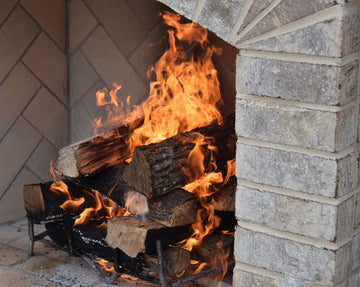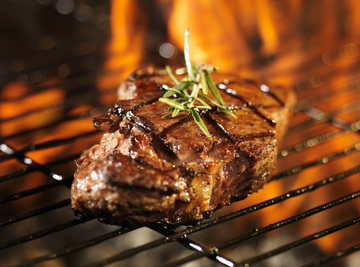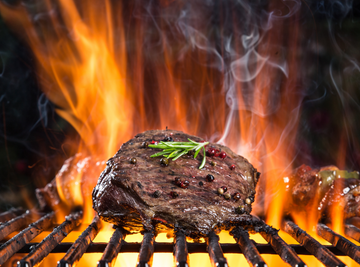Understanding the difference between seasoned and green wood can transform your burning experience—whether you're firing up the fireplace or perfecting your BBQ game.
When it comes to burning wood, not all logs are created equal. The moisture content of your firewood makes the difference between a roaring, efficient fire and a smoky, frustrating experience. At Jackson BBQ, we've been processing premium wood products from New York's orchards for decades, and we've learned that proper seasoning is non-negotiable for quality results.
What is Seasoned Firewood?
Seasoned firewood is wood that has been properly dried to reduce its moisture content to optimal levels—typically between 15-20% for most applications. This process involves cutting the wood and allowing it to air dry for 6-12 months, depending on the wood type, climate, and storage conditions.
Fresh-cut or "green" wood can contain 30-50% moisture or more, making it unsuitable for efficient burning. The seasoning process allows excess water to evaporate naturally, concentrating the wood's combustible compounds and creating the clean, consistent burn characteristics that experienced users demand.
The Science Behind Seasoning
When wood is first cut, water fills the cellular structure throughout the trunk. As the wood seasons, moisture migrates from the interior to the surface and evaporates. This creates several important changes:
- Reduced weight: Seasoned wood weighs significantly less than green wood
- Higher heat output: Less energy is wasted evaporating water during combustion
- Cleaner burn: Lower moisture means less smoke and creosote production
- Better ignition: Dry wood catches fire more easily and burns more consistently
Why Wet Wood is Your Enemy
Poor Heat Output
Wet wood wastes tremendous energy simply evaporating water before combustion can occur. Much of the fire's heat goes toward creating steam rather than warming your space or cooking your food. This inefficiency means you'll burn through more wood while generating less usable heat.
Excessive Smoke Production
High moisture content creates thick, white smoke that can overwhelm your space and irritate your eyes and lungs. For BBQ applications, this acrid smoke imparts bitter, unpleasant flavors rather than the clean, sweet smoke profile you want for your meats.
Creosote Buildup
Wet wood produces creosote—a dangerous, flammable substance that accumulates in chimneys and flues. This tarry buildup creates serious fire hazards and reduces the efficiency of your heating system. Regular cleaning becomes essential when burning improperly seasoned wood.
Difficult Ignition and Maintenance
Green wood is notoriously difficult to light and maintain. You'll struggle with fires that won't catch, constantly die down, or require excessive kindling and attention. This frustration is completely avoidable with properly seasoned wood.
Environmental Impact
Wet wood burns inefficiently, producing more particulate emissions and contributing to air quality problems. Many municipalities restrict or ban the burning of unseasoned wood during certain weather conditions.
How to Identify Seasoned Wood
Visual Indicators
- Cracks in the end grain: Seasoned wood develops radial cracks as it shrinks during drying
- Weathered appearance: The surface may appear gray or weathered rather than fresh-cut
- Separated bark: Bark often loosens and falls away from well-seasoned wood
Physical Tests
- Weight: Seasoned wood feels noticeably lighter than green wood of the same size
- Sound test: Seasoned pieces make a sharp "crack" when knocked together, while green wood produces a dull "thud"
- Feel: Dry wood feels lighter and less dense than wet wood
Moisture Meter Reading
For absolute certainty, use a wood moisture meter. Insert the probes into a fresh split surface (not the exterior) for accurate readings. Quality firewood should measure below 20% moisture content.
The Jackson BBQ Advantage
At Jackson BBQ, our premium applewood products undergo controlled seasoning processes that ensure optimal moisture content for both fireplace and BBQ applications. Harvested from mature, standard-size apple trees in New York's Wayne County orchards along Lake Ontario, our wood benefits from ideal drying conditions and heritage processing methods.
Our Seasoning Process
Professional Management: Each batch is carefully monitored throughout the drying process to achieve consistent moisture levels
Natural Air Drying: We allow sufficient time for proper seasoning without artificial acceleration that can compromise quality
Quality Control: Every shipment meets our exacting standards for moisture content, cleanliness, and burn characteristics
Clean Processing: Our mature orchard trees are free from the wire supports found in dwarf varieties, ensuring pure, uncontaminated wood
Storage and Maintenance Tips
Even properly seasoned wood requires correct storage to maintain its quality:
Proper Stacking
- Stack wood in a single row with space between pieces for airflow
- Keep the pile at least 6 inches off the ground using pallets or rails
- Orient the stack to catch prevailing winds for natural drying
Weather Protection
- Cover the top of your wood pile while leaving sides exposed for ventilation
- Avoid plastic tarps that trap moisture—use materials that breathe
- Store wood in a dry, well-ventilated area when possible
Planning Ahead
- Purchase seasoned wood well before you need it
- Order next year's supply during the current burning season
- Rotate your stock to use older wood first
Seasonal Considerations
At Jackson BBQ, we harvest apple wood during the natural orchard cycle from October through March, when fruit has been picked and orchard maintenance occurs. This timing ensures our wood begins seasoning during optimal weather conditions, taking advantage of winter and spring drying periods.
Summer represents our limited inventory period, making early planning essential for customers who want guaranteed access to premium seasoned applewood. The natural harvest cycle creates predictable supply constraints, but also ensures that our wood follows sustainable, environmentally conscious practices.
Applications Beyond the Fireplace
While this discussion focuses on firewood, the same principles apply to smoking and BBQ applications. Properly seasoned applewood delivers the clean, sweet smoke that has made it the preferred choice of pitmasters and competition teams nationwide.
The mild fruit character of seasoned applewood complements rather than overwhelms food flavors, making it ideal for poultry, pork, and delicate smoking applications. Green applewood produces harsh, bitter smoke that can ruin an otherwise perfect cook.
The Bottom Line
Investing in properly seasoned firewood isn't just about convenience—it's about safety, efficiency, and results. Whether you're warming your home or smoking your signature brisket, the moisture content of your wood determines the success of your efforts.
Wet wood represents false economy. While it might cost less initially, the poor performance, safety risks, and wasted fuel make it expensive in the long run. Quality seasoned wood burns cleaner, hotter, and more efficiently, delivering better value and superior results.
Ready to experience the difference that properly seasoned wood makes? Contact Jackson BBQ at 315-510-5802 or contact@jacksonbbq.com to discuss your firewood and smoking wood needs. Our premium New York applewood represents the gold standard for seasoned wood products—sustainably harvested and professionally processed for consistent, reliable performance.
Remember: Going green never tasted so good – our applewood is harvested during natural orchard management cycles, making it the most environmentally conscious renewable choice for your burning needs!



